How AI Chatbots and Human Agents Differ in Customer Service
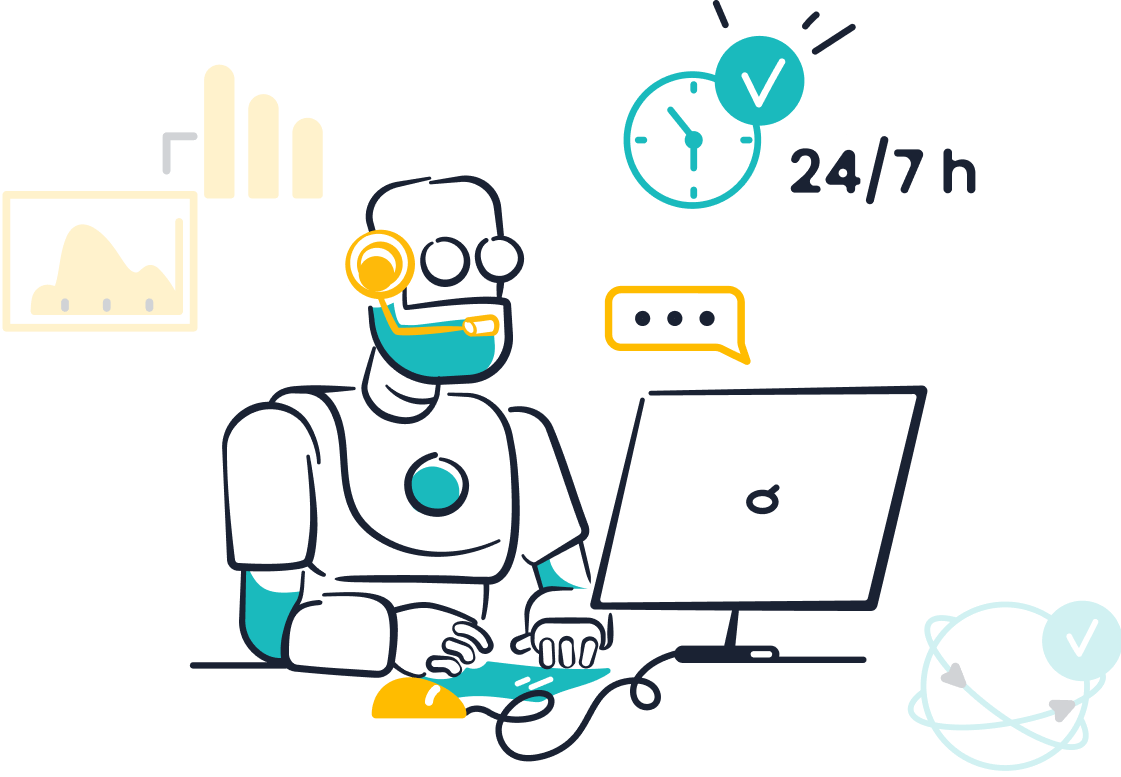
Customer service has transformed with the rise of AI chatbots and the enduring role of human agents. The benefits of AI chatbots in customer service are significant, as they excel at speed and availability, with 55% of consumers preferring them over waiting for a live agent. These chatbots ensure instant responses and operate 24/7, meeting the demand for quick solutions. However, 90% of people still prefer human interaction, citing better understanding and thorough answers. Each approach offers unique strengths. For instance, Sobot’s AI-powered chatbot handles repetitive queries efficiently, while human agents tackle complex issues with empathy. Choosing the right balance can elevate your service strategy.
Understanding AI Chatbots and Human Agents in Customer Service
What Are AI Chatbots?
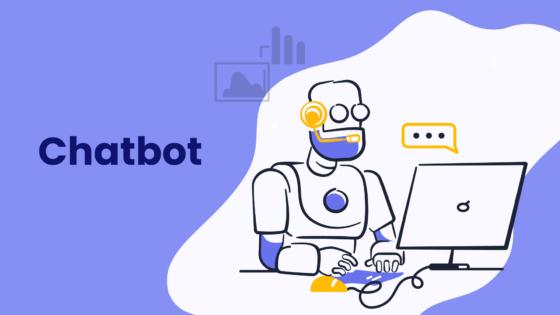
AI chatbots are software programs designed to simulate human-like conversations. They use advanced technologies like natural language processing (NLP) to understand your queries, detect intent, and even gauge emotional tone. These chatbots can handle a wide range of tasks, from answering simple questions to providing personalized recommendations. For example, Sobot’s AI chatbot operates 24/7, offering multilingual support and automating repetitive queries. This not only improves efficiency but also reduces costs for businesses.
AI chatbots excel in speed and scalability. They can manage 100 customer inquiries in the time it takes a human agent to handle one. Additionally, they resolve 60-90% of chat issues without human intervention. Machine learning further enhances their capabilities by analyzing data patterns, allowing them to improve over time. This makes them an essential tool in modern customer service.
What Are Human Agents?
Human customer service representatives bring empathy and personalization to customer interactions. They undergo extensive training to understand your needs and provide tailored solutions. For instance, onboarding for new agents often lasts two to eight months, covering company values, products, and services. Shadowing experienced agents helps them gain practical experience, while refresher training ensures they stay updated on new processes.
Unlike AI chatbots, human agents excel at handling complex and emotional issues. They can navigate situations that require a deep understanding of context or a compassionate approach. Their ability to connect on a personal level makes them indispensable in scenarios where customer satisfaction hinges on emotional intelligence.
The Role of Each in Modern Customer Support
AI chatbots and human agents complement each other in customer service. Chatbots handle routine tasks like answering FAQs or providing order updates, freeing up human agents to focus on more intricate problems. For example, Delta Airlines uses chatbots to streamline interactions, while human agents address complex issues to enhance the overall experience.
This collaboration creates a balanced approach. AI chatbots ensure efficiency and quick responses, while human agents deliver empathy and nuanced solutions. Together, they form a robust customer support system that meets diverse needs.
Benefits of AI Chatbots in Customer Service
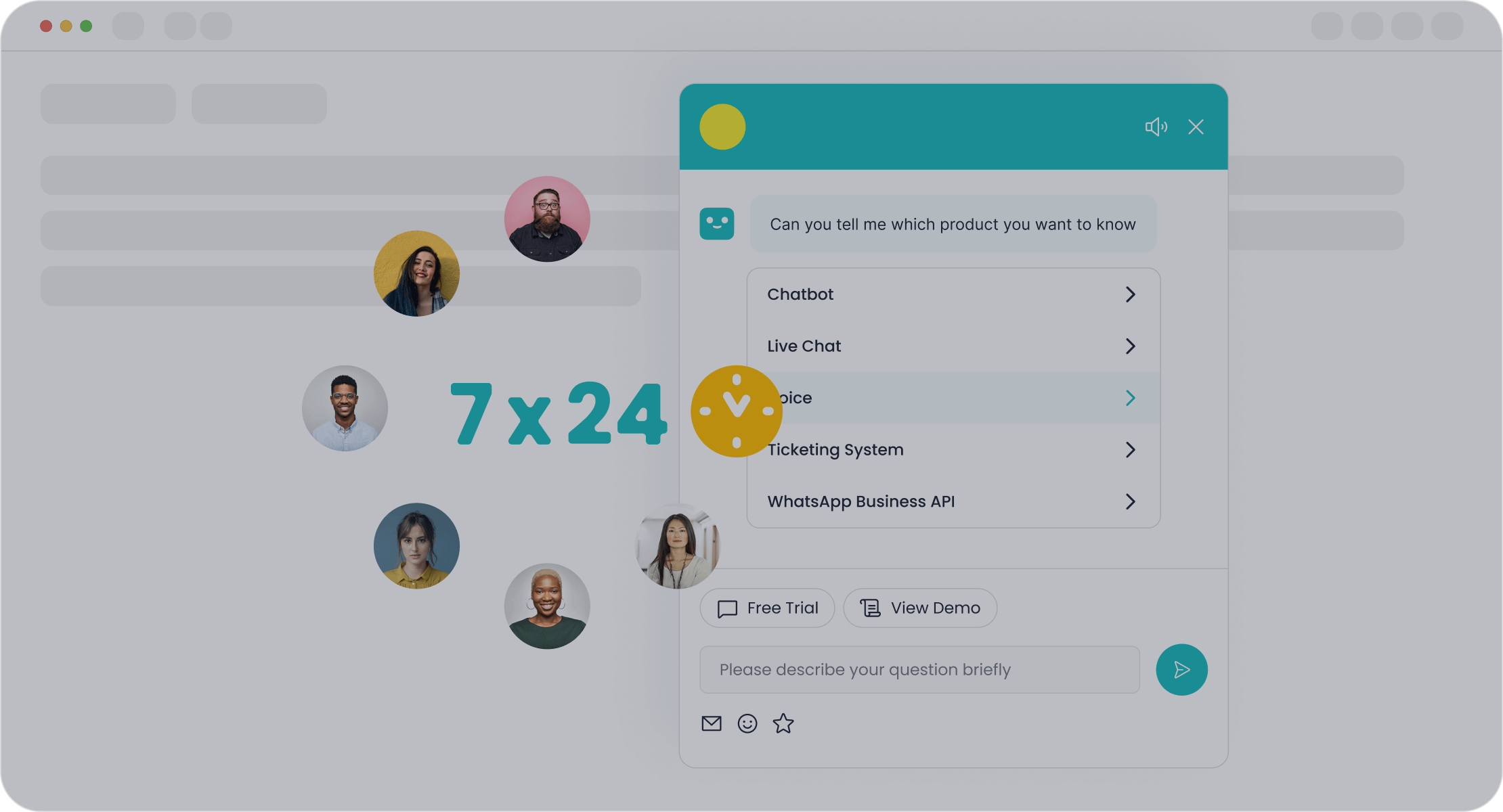
Efficiency and Scalability
AI chatbots revolutionize customer service by delivering unmatched efficiency and scalability. They handle thousands of interactions simultaneously, ensuring no customer waits for assistance. For instance, in 2021, AI chatbots facilitated 400 million interactions, a staggering 2,350% increase from 2019. This growth highlights their ability to scale operations without compromising service quality.
You can rely on chatbots to resolve repetitive queries quickly, freeing human agents to focus on complex issues. This division of labor improves overall productivity. According to the CX Trends Report, 71% of customers believe AI chatbots provide faster replies, making them a cornerstone of good customer service. By automating routine tasks, chatbots also reduce agent burnout, creating a more effective customer support system.
24/7 Availability and Cost Savings
One of the most significant benefits of AI chatbots in customer service is their 24/7 availability. Unlike human agents, chatbots never take breaks, ensuring your customers receive support at any time. This constant availability accelerates response times, often three times faster than traditional methods. It also enhances customer satisfaction, as 62% of consumers prefer chatbots for their quick and reliable service.
The financial advantages are equally compelling. Chatbots can automate up to 30% of routine tasks, saving businesses billions annually. For example, automation in the U.S. alone could save $23 billion. By reducing the need for additional agents, you can allocate resources more efficiently while maintaining high service standards.
| Statistic | Value |
|---|---|
| Annual growth rate of chatbot market | 23.3% |
| Projected market value by 2028 | $15.5 billion |
| Consumer rating of interactions with bots | 87.2% neutral or positive |
| Routine tasks managed by bots | 80% |
Enhancing Customer Support with Sobot's Chatbot
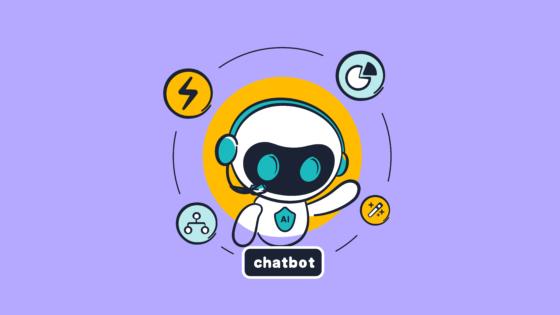
Sobot's AI chatbot takes customer service to the next level by combining advanced technology with user-friendly features. It autonomously resolves regular queries, improving productivity by 70%. Its multilingual capabilities ensure you can engage with customers globally, while its 24/7 operation guarantees uninterrupted support.
The chatbot also provides actionable insights through over 300 performance indicators. These insights help you optimize responses and enhance customer engagement. For example, Sobot's customizable dashboards allow you to track key metrics and identify areas for improvement. This level of detail ensures effective customer support and boosts satisfaction rates.
By integrating Sobot's chatbot into your operations, you can achieve increased efficiency, reduced costs, and better customer experiences. Its smart self-service features and proactive messaging capabilities make it an invaluable tool for modern businesses.
Strengths and Limitations of Human Agents
Empathy and Personalization
Human customer service representatives excel in empathy and personalization, making them indispensable in customer service. Unlike AI, they can connect emotionally with customers, ensuring they feel understood and valued. For example, when you face a frustrating issue, a human agent can listen, acknowledge your concerns, and adapt their tone to match your emotions. This emotional intelligence builds trust and loyalty.
Businesses that prioritize empathy often see a significant boost in customer satisfaction. Combining fast AI responses with human empathy can increase satisfaction scores by 25%. Successful companies also emphasize rapport building and compassion, which further enhances the customer experience. While AI chatbots are efficient, they lack the human touch that makes interactions memorable.
Handling Complex and Emotional Issues
When it comes to complex or emotionally charged situations, human agents outperform AI. They can analyze intricate problems, make on-the-spot decisions, and offer creative solutions. For instance, if you have a unique issue that doesn’t fit into predefined categories, a human agent can think critically and resolve it effectively.
Emotional issues also require a human touch. Imagine a scenario where a customer is upset about a delayed order. A human agent can empathize, apologize sincerely, and offer a tailored solution. This adaptability ensures that even the most challenging situations are handled with care. However, human agents do face limitations, such as fatigue and inconsistency, which can affect service quality.
The Value of Human Agents in Customer Service
Human agents bring unique strengths to customer service that AI cannot replicate. They offer better understanding, thorough explanations, and more options for resolving issues. According to a survey, 61% of customers believe human agents understand their needs better, while 53% appreciate their detailed responses. These qualities make human agents less likely to cause frustration and more likely to leave a positive impression.
| Strengths of Human Agents | Percentage |
|---|---|
| Better understanding of needs | 61% |
| More thorough explanations | 53% |
| Less likely to cause frustration | 52% |
| Offer more options | 50% |
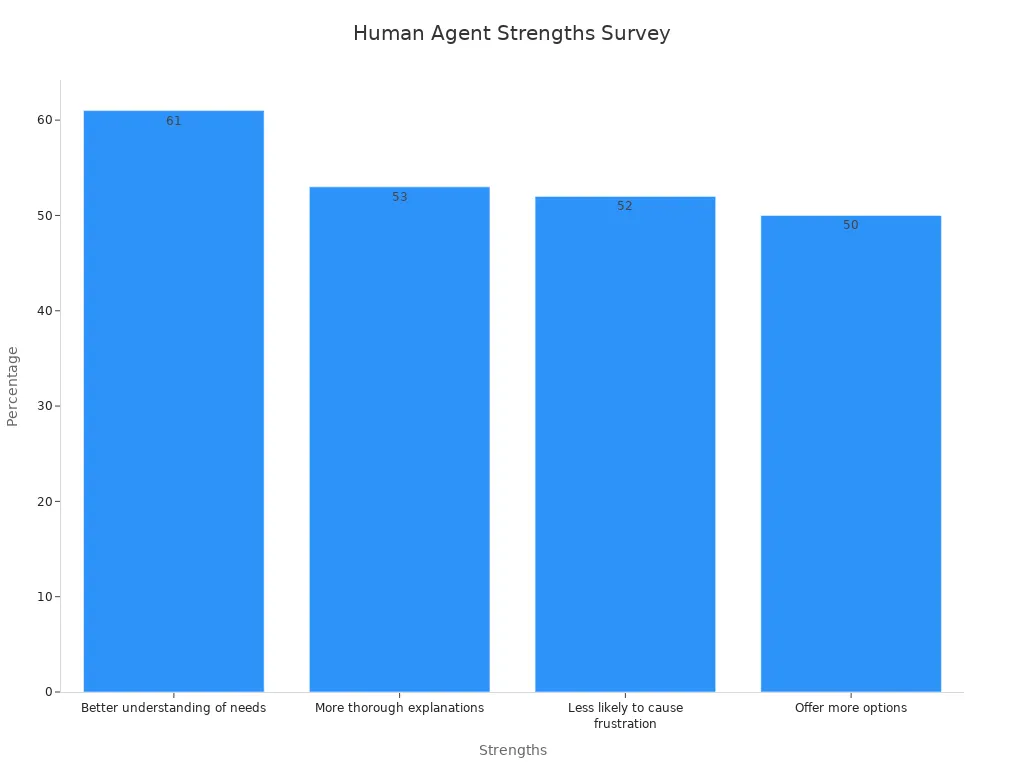
Despite their higher costs and scalability challenges, human agents remain vital for delivering personalized and empathetic service. By integrating human agents with AI tools like Sobot’s omnichannel solution, you can create a balanced approach. This hybrid model ensures efficiency while preserving the emotional connection that customers value.
Comparing AI Chatbots and Human Agents Across Key Metrics
Personalization and Empathy
When it comes to personalization and empathy, human customer service representatives have a clear edge. They excel at understanding your emotions and tailoring responses to your unique needs. For example, if you’re frustrated about a delayed delivery, a human agent can empathize, apologize sincerely, and offer a solution that feels personal. This emotional intelligence builds trust and strengthens customer relationships.
AI chatbots, on the other hand, focus on efficiency. They use metrics like First Contact Resolution (FCR) and Average Handle Time (AHT) to measure success. While chatbots can provide quick and accurate responses, they often lack the depth of empathy that human agents bring. However, studies show that chatbots can still enhance conversation quality, with users rating their interactions positively when tasks are simple and straightforward.
In customer service, both approaches have their place. Chatbots handle routine queries efficiently, while human agents shine in emotionally charged or complex situations. Together, they create a balanced system that meets diverse customer needs.
Cost and Scalability
AI chatbots offer significant cost savings and scalability advantages. They can reduce operational costs by up to 70%, making them a cost-effective solution for businesses. Unlike human agents, chatbots can handle thousands of interactions simultaneously without additional expenses. This scalability ensures you can manage high volumes of customer inquiries during peak times without compromising service quality.
Human agents, while invaluable for their empathy and problem-solving skills, come with higher costs. Training, salaries, and benefits add to the expense, and scaling a human team requires significant investment. However, a hybrid approach that combines chatbots with human agents can optimize costs while maintaining high customer satisfaction. For instance, Sobot’s omnichannel solution integrates AI chatbots to handle repetitive tasks, freeing human agents to focus on more complex issues.
Availability and Response Time
AI chatbots excel in availability and response time. They operate 24/7, ensuring your customers receive support whenever they need it. On average, chatbots respond to queries in less than 5 seconds, compared to the 2-minute average for human agents. This speed and constant availability make chatbots a cornerstone of good customer service, especially in today’s fast-paced world.
Human agents, however, are typically available only during business hours. While they may take longer to respond, their ability to provide personalized and empathetic service often compensates for the delay. A study by IBM found that chatbots can answer up to 80% of routine questions, significantly reducing response times and allowing human agents to focus on more complex tasks.
By leveraging both AI chatbots and human agents, you can ensure fast, reliable, and empathetic customer support. This hybrid model not only improves efficiency but also enhances the overall customer experience.
Managing Complex Customer Interactions
Managing complex customer interactions requires a thoughtful approach that combines technology and human expertise. AI chatbots and human agents each play a vital role in ensuring customers receive effective solutions, even in challenging scenarios.
AI chatbots act as the first point of contact for many customers. They handle repetitive tasks like answering FAQs or providing order updates. This allows human agents to focus on more intricate issues. For example, if a customer has a unique problem with a product, a chatbot can collect initial details and then seamlessly transfer the case to a human agent. This smooth handoff ensures the customer doesn’t need to repeat information, saving time and reducing frustration.
Human agents excel in situations requiring empathy and adaptability. Imagine a customer facing a sensitive banking issue. A human agent can listen carefully, express genuine understanding, and offer a tailored solution. This emotional connection builds trust and loyalty, which are essential in customer service. Additionally, human agents can think critically to solve unusual problems that fall outside predefined categories.
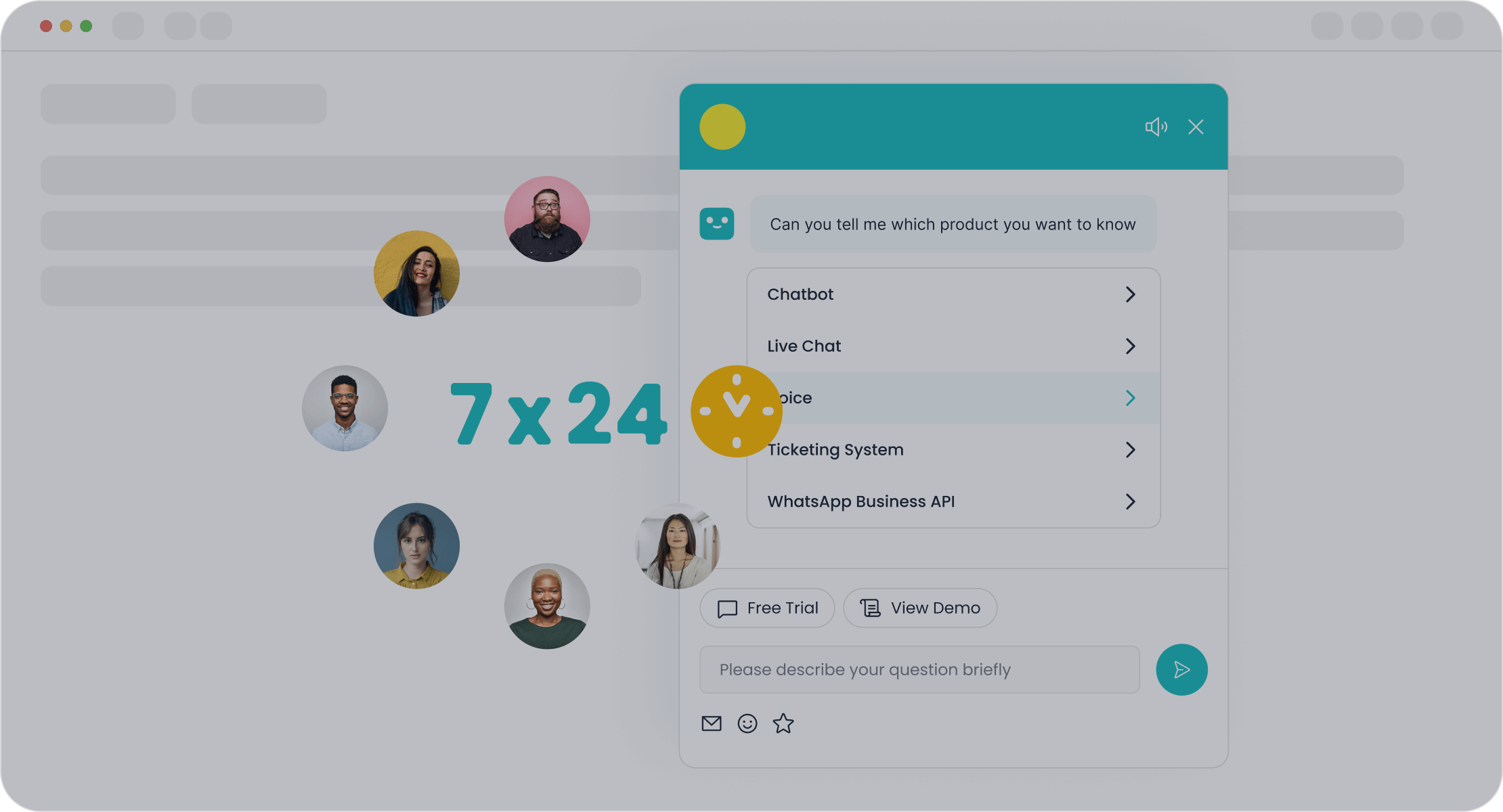
The collaboration between AI chatbots and human agents creates a balanced system. Chatbots provide 24/7 availability, ensuring customers always have access to support. Meanwhile, human agents step in when complex or emotional issues arise. For instance, Sobot’s omnichannel solution integrates AI chatbots with live agents, ensuring seamless transitions and efficient service. This approach not only improves customer satisfaction but also enhances operational efficiency.
By leveraging the strengths of both AI and human agents, you can manage complex customer interactions effectively. This hybrid model ensures that every customer receives the right level of support, whether their issue is simple or highly intricate.
Hybrid Approaches: Combining AI Chatbots and Human Agents
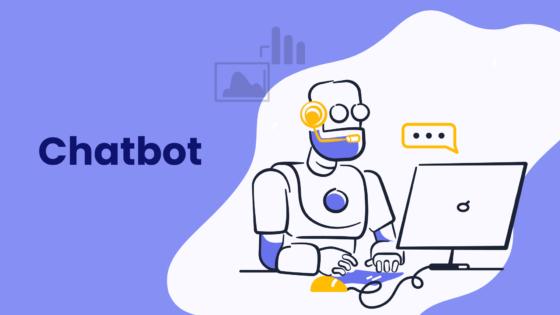
When to Use AI Chatbots
AI chatbots shine in scenarios requiring speed and availability. They handle repetitive tasks like answering FAQs, providing order updates, or scheduling appointments. For instance, linear decision trees allow chatbots to follow a step-by-step structure, ensuring predictable interactions. This makes them ideal for addressing basic support questions or offering automated responses. With 24/7 availability, chatbots ensure no customer waits for assistance, even during off-hours.
Chatbots also excel in scalability on demand. They manage thousands of interactions simultaneously, making them a cost-effective scaling solution for businesses. For example, Sobot’s AI chatbot autonomously resolves regular queries, improving productivity by 70%. Its multilingual capabilities and omnichannel support allow you to engage with customers globally, ensuring good customer service across diverse markets.
When to Use Human Agents
Human agents are essential for handling complex or emotionally charged issues. They bring empathy and personalization to customer interactions, which helps in developing customer trust. For example, non-linear decision trees enable agents to navigate diverse outcomes, such as troubleshooting technical issues or managing in-depth queries. This adaptability ensures customers feel understood and valued.
Best practices for selecting human agents include training them in active listening and positive language. Regular feedback analysis also helps improve their performance. These steps ensure agents can deliver excellent service consistently. For instance, when a customer faces a sensitive issue, a human agent can offer tailored solutions, building trust and loyalty.
The Benefits of a Hybrid Model with Sobot's Omnichannel Solution
Combining AI chatbots and human agents creates a balanced customer support system. Chatbots handle routine inquiries, while human agents focus on complex problems. This hybrid approach enhances efficiency and customer satisfaction. According to McKinsey, companies using both AI and human agents saw a 20% reduction in complaints and a 10% increase in retention rates.
Sobot’s omnichannel solution exemplifies this model. It integrates AI chatbots with live agents, ensuring seamless transitions between automated and human support. For example, Sobot’s chatbots provide 80% correct answers, while human agents resolve intricate issues. This collaboration improves the customer satisfaction score (CSAT) to 97% and increases the problem resolution rate to 85%.
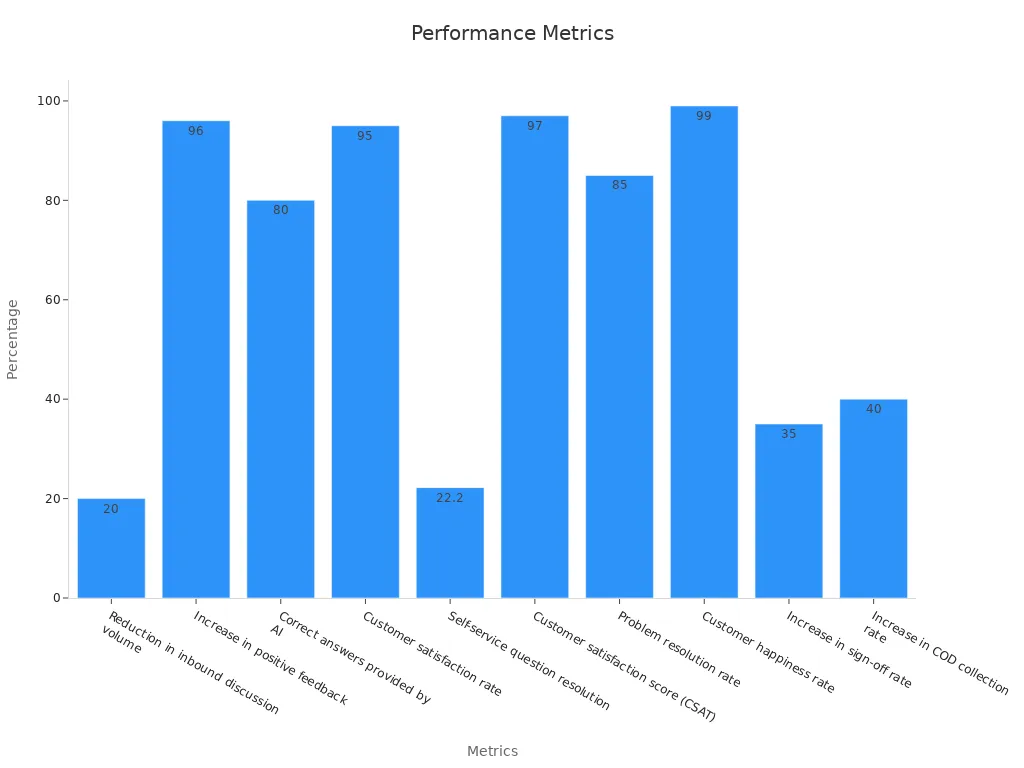
By adopting a hybrid model, you can achieve cost-effective scaling while maintaining high service quality. This approach not only builds trust but also ensures speed and availability, meeting diverse customer needs effectively.
AI chatbots and human agents each bring unique strengths to customer service. Chatbots excel in speed, scalability, and 24/7 availability, while human agents shine in empathy, personalization, and resolving complex issues. The table below highlights their key differences:
| Aspect | Human Customer Service | AI Customer Service |
|---|---|---|
| Focus | Building relationships, understanding customer emotions | Speed, efficiency, and scalability |
| Strengths | Empathy, personalized solutions, complex issue resolution | Handling high volumes, instant responses, 24/7 availability |
| Weaknesses | Limited capacity, prone to fatigue | Limited emotional understanding, struggles with complex issues |
To achieve better customer experience and satisfaction, consider these steps:
- Improve your employee experience to boost engagement and morale.
- Prioritize empathy by hiring and training staff to connect with customers emotionally.
- Use AI for routine tasks and human agents for complex issues, creating a balanced system.
A hybrid approach, like Sobot's omnichannel solution, combines the strengths of both. It ensures efficiency through AI while maintaining the human touch for a better customer experience. This strategy not only enhances satisfaction but also builds lasting customer loyalty.
FAQ
What are the main advantages of using AI chatbots in customer service?
AI chatbots provide instant responses and operate 24/7. They handle repetitive queries, reducing agent workload. For example, Sobot’s chatbot improves productivity by 70% and cuts costs by up to 50%. These features make chatbots a cost-effective solution for modern customer service.
Can AI chatbots replace human agents entirely?
No, AI chatbots cannot fully replace human agents. While they excel at efficiency and scalability, they lack empathy and emotional intelligence. Human agents remain essential for handling complex or sensitive issues, ensuring a personalized customer service experience.
How does a hybrid model improve customer service?
A hybrid model combines AI chatbots and human agents. Chatbots handle routine tasks, while human agents focus on complex problems. For instance, Sobot’s omnichannel solution ensures seamless transitions between chatbots and agents, enhancing efficiency and customer satisfaction.
Are AI chatbots suitable for all industries?
Yes, AI chatbots can adapt to various industries like retail, finance, and gaming. For example, Sobot’s chatbot supports multilingual interactions, making it ideal for global businesses. Its customizable features cater to specific industry needs, ensuring effective customer service.
How can businesses measure the success of AI chatbots?
Businesses can track metrics like First Contact Resolution (FCR), Average Handle Time (AHT), and customer satisfaction scores. Sobot’s chatbot provides over 300 performance indicators, helping you optimize operations and improve customer service outcomes.
See Also
Enhancing Customer Satisfaction Through Chatbot Technology
Transforming Support Services With AI Customer Agents
Effective Strategies for Managing Live Chat Teams